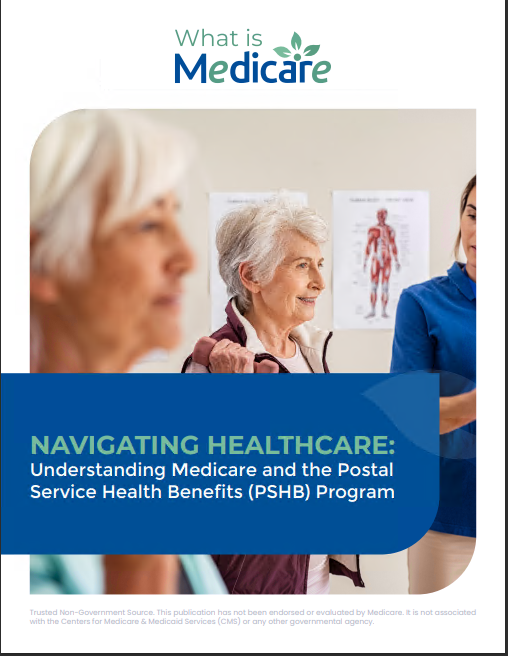Key Takeaways:
- Understanding the differences in coverage and flexibility between Original Medicare and Medicare Advantage is crucial to making an informed decision.
- Consider your healthcare needs, travel habits, and provider preferences when choosing between these two options.
Trying to Choose Between Original Medicare and an Advantage Plan? Here’s What You Should Consider
Navigating the world of Medicare can be overwhelming, especially when it comes to deciding between Original Medicare and a Medicare Advantage Plan. Each option comes with its own set of benefits and potential drawbacks. Your choice will largely depend on your personal health needs, lifestyle, and how much flexibility you desire in your healthcare. This article will guide you through the critical aspects you need to consider to make an informed decision.
Thinking About Costs? Here’s the Lowdown
Cost is one of the most significant factors to consider when choosing between Original Medicare and Medicare Advantage. Original Medicare typically requires you to pay a monthly premium for Part B (which covers outpatient care), and you may also have costs associated with Part A if you haven’t worked enough quarters to qualify for premium-free coverage. Additionally, out-of-pocket costs such as deductibles and coinsurance can add up, particularly if you need frequent medical care.
You might also want to purchase a separate Part D plan for prescription drug coverage and a Medigap policy to help cover the costs that Original Medicare doesn’t, such as copayments, coinsurance, and deductibles. While these add-ons can increase your monthly expenses, they provide more predictable costs and greater flexibility in choosing healthcare providers.
Medicare Advantage plans, also known as Part C, often combine all your healthcare needs into one plan. This can include Part A, Part B, and sometimes even Part D, along with additional benefits like dental, vision, or hearing coverage. The premiums for Medicare Advantage plans can vary, and while they often have lower upfront costs than Original Medicare with Medigap, the trade-off is that you may face higher out-of-pocket costs when you receive care, especially if you need services outside your plan’s network.
How Much Flexibility Do You Really Need?
When it comes to flexibility, Original Medicare typically offers more freedom than Medicare Advantage. With Original Medicare, you can visit any doctor or healthcare provider that accepts Medicare, anywhere in the United States. This is particularly advantageous if you have specific healthcare providers you prefer or if you travel frequently and want the assurance that you can access medical care wherever you are.
Medicare Advantage plans, however, often require you to use a network of doctors and hospitals. These networks can be local, regional, or national, depending on the plan. If you see a provider outside of your plan’s network, you may have to pay more, or the services may not be covered at all. This network restriction can be a drawback if you have established relationships with healthcare providers who are not in the network or if you need access to specialists that are outside of the plan’s network.
Furthermore, Medicare Advantage plans may require referrals for specialist care, which can add an extra layer of complexity and delay in getting the care you need. In contrast, with Original Medicare, you can generally see specialists without a referral, giving you more control over your healthcare decisions.
Why Extra Benefits Could Sway Your Decision
Medicare Advantage plans often include additional benefits that Original Medicare does not cover, which can make them appealing if you require these services. These extra benefits can include dental care, vision care, hearing aids, and wellness programs such as gym memberships. Some plans also offer benefits like transportation to medical appointments or coverage for over-the-counter medications.
These extras can be particularly valuable if you know you will use them, but it’s important to carefully consider whether these benefits outweigh the potential downsides of being in a more restrictive network. Additionally, while these added benefits might sound attractive, they can come with higher premiums or copayments, and not all plans offer the same extras. It’s crucial to compare the specifics of each plan to determine if the additional benefits align with your healthcare needs.
Original Medicare, on the other hand, focuses primarily on covering medically necessary services, and you may need to purchase separate insurance, like Medigap, to cover costs not included in Original Medicare. Although this means you won’t get the extras offered by Medicare Advantage, it also means you won’t have to worry about network restrictions when seeking care.
Does Provider Access Matter to You?
The ability to choose your healthcare providers is another critical factor in deciding between Original Medicare and Medicare Advantage. If you have long-standing relationships with specific doctors or specialists, or if you require care from multiple providers, Original Medicare might be the better option. This is because Original Medicare allows you to see any provider who accepts Medicare, without the need for referrals or network limitations.
In contrast, Medicare Advantage plans typically have a network of preferred providers and facilities. If your current healthcare providers are not in the network, you may have to switch to providers who are, or you may face higher out-of-pocket costs if you choose to stay with your current providers. Additionally, the need for referrals in many Medicare Advantage plans can limit your ability to see specialists quickly and without extra steps.
This aspect of provider access is especially important for those with complex health conditions requiring specialized care or for those who want the flexibility to choose their doctors without restrictions.
Travel Often? Here’s What to Consider
If you travel frequently, either within the United States or abroad, your choice between Original Medicare and Medicare Advantage could significantly impact your access to healthcare. Original Medicare provides nationwide coverage, meaning you can see any doctor or visit any hospital that accepts Medicare, regardless of your location within the U.S. This makes it an excellent option for those who are often on the go or live in different places throughout the year.
Medicare Advantage plans, however, often limit coverage to a specific service area. While emergency care is typically covered anywhere in the U.S., routine care might not be, which could be a significant drawback if you travel often or spend time in multiple states. Some Medicare Advantage plans do offer coverage for out-of-network care, but this usually comes at a higher cost, and the details can vary widely between plans.
For international travel, Original Medicare generally does not cover care outside of the U.S., though some Medigap policies offer limited foreign travel emergency coverage. Medicare Advantage plans also usually do not cover care abroad, but some plans may include limited international travel benefits. If you spend significant time outside the country, it’s essential to consider additional travel insurance or a Medigap policy that provides international coverage.
Prescription Coverage: What You Need to Know
Prescription drug coverage is another key area where Original Medicare and Medicare Advantage differ. Original Medicare does not include prescription drug coverage, so you’ll need to enroll in a separate Part D plan if you want help paying for medications. These Part D plans are offered by private insurers, and the costs and coverage can vary significantly between plans.
Medicare Advantage plans often include prescription drug coverage as part of the plan, which can be convenient because it bundles your medical and drug coverage into one plan. However, the list of covered medications, known as a formulary, can differ between Medicare Advantage plans and Part D plans. It’s crucial to check whether your prescriptions are covered under the plan’s formulary and to review the formulary annually during open enrollment, as it can change from year to year.
Moreover, Medicare Advantage plans with drug coverage may have different cost-sharing structures for medications, which could affect your out-of-pocket costs. This makes it essential to carefully compare the drug coverage of different plans, especially if you take multiple medications.
What About Out-of-Pocket Limits?
One of the key advantages of Medicare Advantage plans is that they include an out-of-pocket maximum, which Original Medicare does not offer. This means that once you reach a certain amount in out-of-pocket costs for the year, the plan will cover 100% of your Medicare-covered services for the rest of the year. This can provide significant financial protection, especially for those who anticipate high healthcare costs due to chronic conditions or extensive medical care.
Original Medicare, by contrast, has no out-of-pocket maximum, meaning your costs can continue to accumulate throughout the year. If you require frequent or costly healthcare services, this lack of a spending cap could result in substantial out-of-pocket expenses. Many people opt to purchase a Medigap policy to cover these additional costs, but Medigap policies come with their own premiums and may not cover everything.
This difference in out-of-pocket limits is a crucial consideration, particularly if you are managing a chronic illness or expect to need extensive healthcare services. The peace of mind that comes with knowing your costs will be capped may make a Medicare Advantage plan more attractive, despite the network restrictions.
Can You Easily Switch Later On?
Finally, it’s important to consider the flexibility of switching between plans if your needs change over time. If you start with Original Medicare and later decide you want the additional benefits or cost structure of a Medicare Advantage plan, you can switch during the annual open enrollment period. Similarly, if you are currently in a Medicare Advantage plan and want to switch back to Original Medicare, you can do so during this period as well.
However, switching from a Medicare Advantage plan to Original Medicare with a Medigap policy may be more complicated, especially if you live in a state that allows medical underwriting. This means that insurance companies can consider your health status when determining your eligibility for a Medigap policy, which could make it difficult to obtain coverage if your health has declined.
Therefore, it’s crucial to think long-term when making your initial choice. While you do have the option to switch plans, the process might not be straightforward, and the coverage you can obtain later may depend on your current health.
Finding the Right Fit
Deciding between Original Medicare and a Medicare Advantage plan is not a one-size-fits-all decision. It requires careful consideration of your current and future healthcare needs, your financial situation, and how much flexibility you desire in your choice of healthcare providers. By weighing the pros and cons of each option, you can make a decision that best fits your unique situation. The choice between Original Medicare and a Medicare Advantage plan is more than just a matter of comparing costs; it involves evaluating your personal healthcare preferences, how often you travel, your relationships with healthcare providers, and your need for additional services.
Looking Ahead
Ultimately, the right choice for you will depend on how well each option aligns with your healthcare needs now and in the future. It’s important to reassess your situation each year during the Medicare open enrollment period, as your health needs or financial situation may change, or new plans may become available that better suit your needs. By staying informed and weighing all your options, you can make a decision that supports your health and financial well-being for years to come.
Contact Information:
Email: [email protected]
Phone: 8175553456










